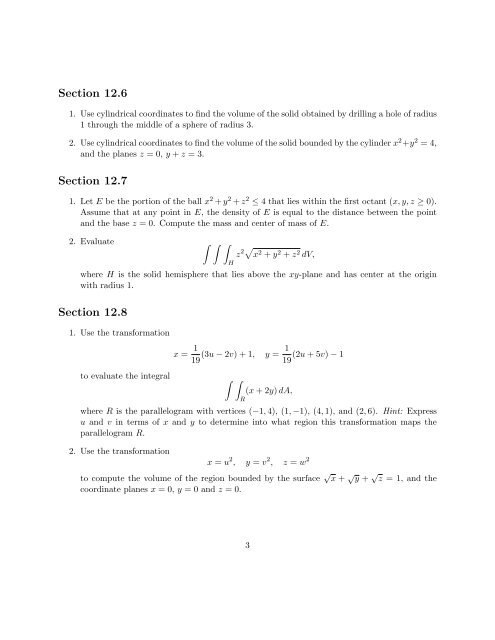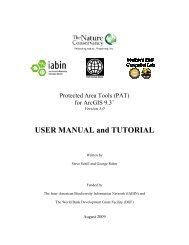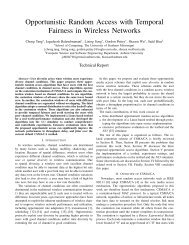Section 12.1 Section 12.2
Section 12.1 Section 12.2
Section 12.1 Section 12.2
- No tags were found...
You also want an ePaper? Increase the reach of your titles
YUMPU automatically turns print PDFs into web optimized ePapers that Google loves.
<strong>Section</strong> 12.61. Use cylindrical coordinates to find the volume of the solid obtained by drilling a hole of radius1 through the middle of a sphere of radius 3.2. Use cylindrical coordinates to find the volume of the solid bounded by the cylinder x 2 +y 2 = 4,and the planes z = 0, y + z = 3.<strong>Section</strong> 12.71. Let E be the portion of the ball x 2 + y 2 + z 2 ≤ 4 that lies within the first octant (x, y, z ≥ 0).Assume that at any point in E, the density of E is equal to the distance between the pointand the base z = 0. Compute the mass and center of mass of E.2. Evaluate ∫ ∫ ∫Hz 2√ x 2 + y 2 + z 2 dV,where H is the solid hemisphere that lies above the xy-plane and has center at the originwith radius 1.<strong>Section</strong> 12.81. Use the transformationto evaluate the integralx = 1 1(3u − 2v) + 1, y = (2u + 5v) − 119 19∫ ∫R(x + 2y) dA,where R is the parallelogram with vertices (−1, 4), (1, −1), (4, 1), and (2, 6). Hint: Expressu and v in terms of x and y to determine into what region this transformation maps theparallelogram R.2. Use the transformationx = u 2 , y = v 2 , z = w 2to compute the volume of the region bounded by the surface √ x + √ y + √ z = 1, and thecoordinate planes x = 0, y = 0 and z = 0.3
















